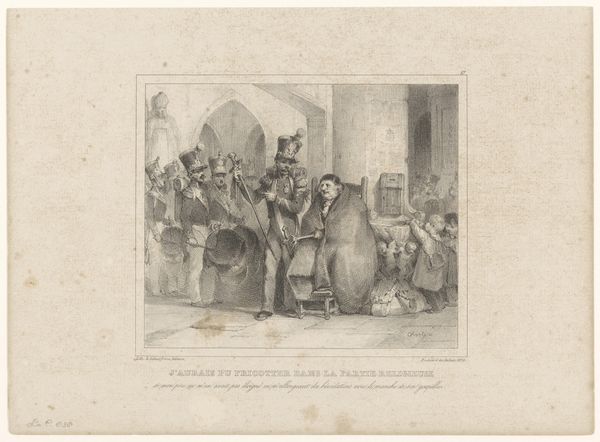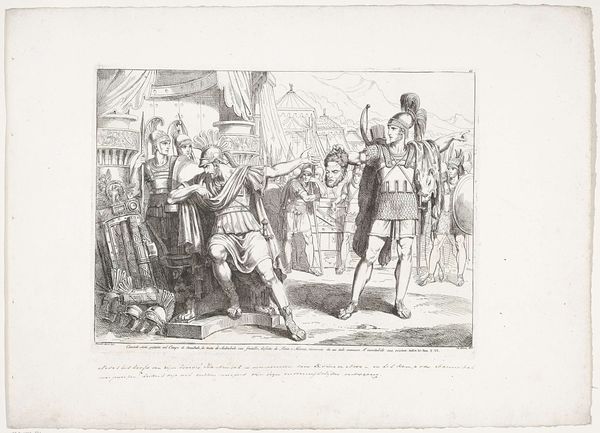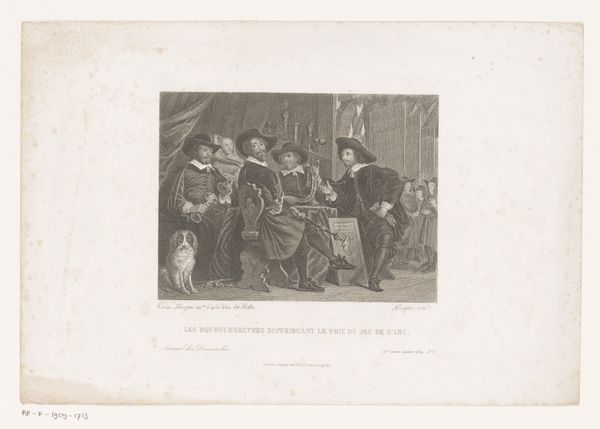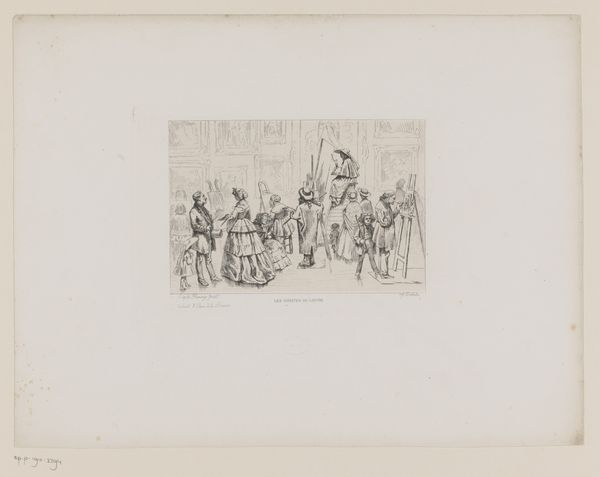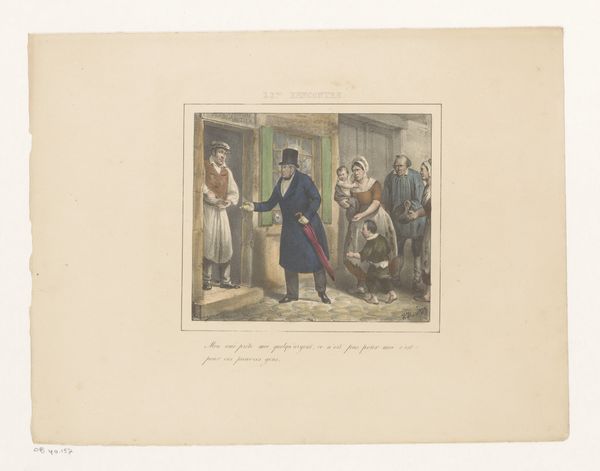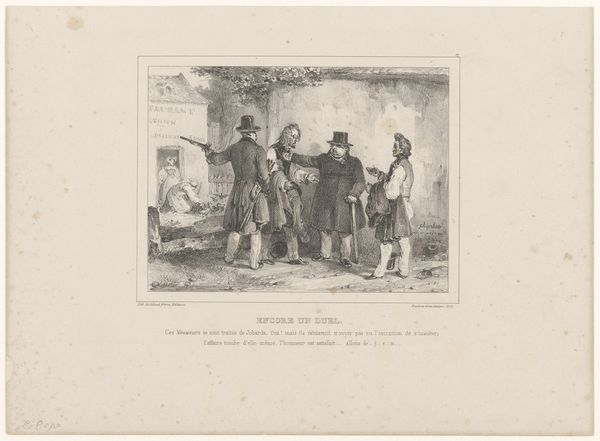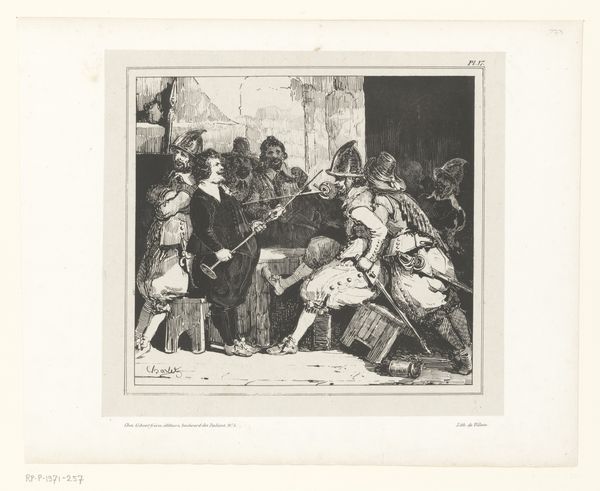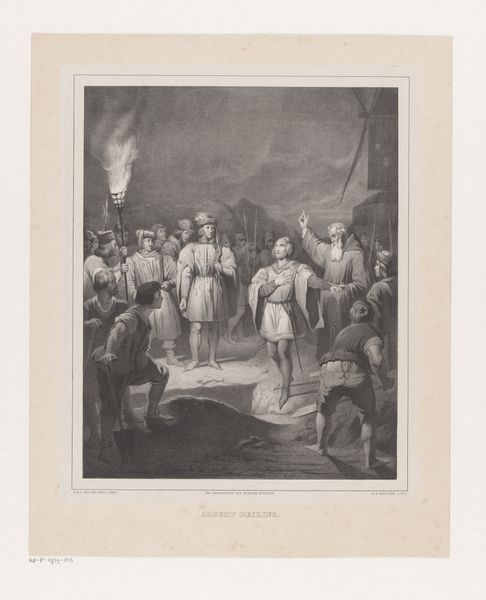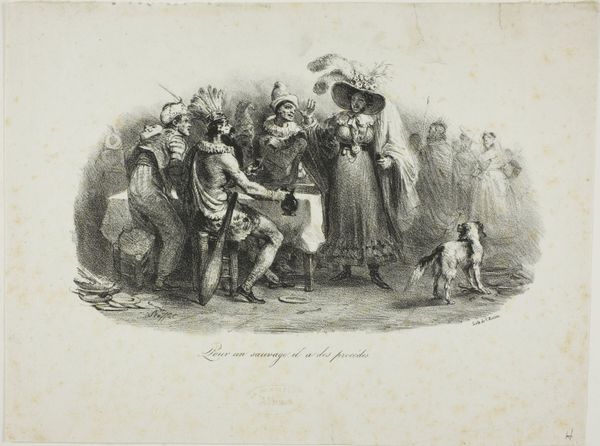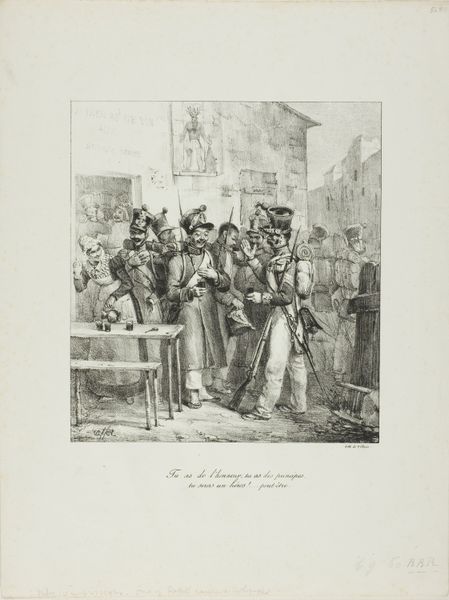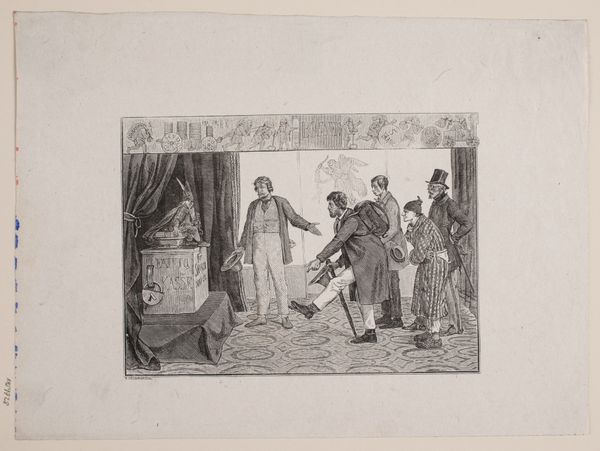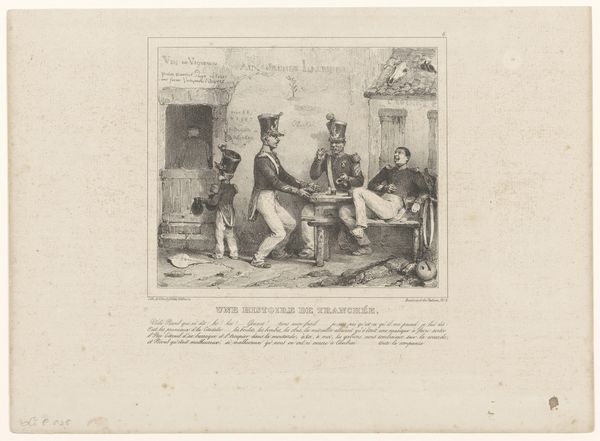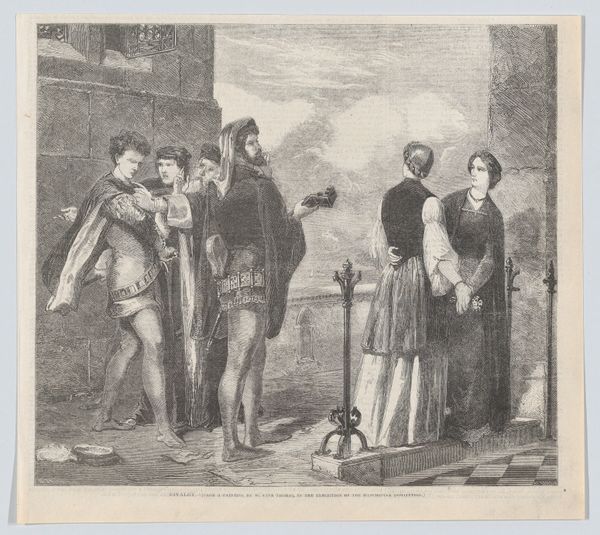
print, engraving
#
portrait
#
narrative-art
# print
#
figuration
#
romanticism
#
genre-painting
#
history-painting
#
engraving
Dimensions: height 220 mm, width 270 mm
Copyright: Rijks Museum: Open Domain
Editor: Here we have Jean-Louis Van Hemelryck’s engraving, “Soldaat Van der Snuijff met een kind op de arm,” made in 1828. There’s almost a comical air to it, seeing all these soldiers crowded together, one holding a baby. What's your read on this piece? Curator: Well, the scene appears rooted in specific socio-political anxieties. These weren't just generic soldiers; these are very pointed depictions relating to Dutch military life and public perception at the time. The text beneath the image would be crucial in decoding the narrative Van Hemelryck presents. How does the presence of the child play into that, do you think? Editor: Perhaps the artist wanted to show the human side of soldiers. We expect them to be stoic, so maybe this is commenting on how they are people with families too. Curator: Possibly, but let’s also consider the broader context. The 1820s were a period of national identity formation, rife with differing opinions of civic engagement. I’d wager that this work subtly critiques militarism, potentially highlighting the disruption of family life caused by war or military service. Do you notice any particular element of visual storytelling that drives you to that interpretation? Editor: Looking closer, some soldiers seem kind of indifferent. Their body language reads as weary. So it could be a commentary on how everyday citizens saw them, or how they felt. It shows a disconnect. Curator: Exactly. This image, though small, allows us to analyze contemporary sentiments towards military culture, revealing complex negotiations between national duty and private lives, now immortalized as historical narratives shaped by political considerations. Editor: I hadn’t considered the political subtext, focusing instead on a personal narrative. It really shifts the reading. Curator: Indeed! Thinking about the historical context opens up a richer understanding. Always consider the sociopolitical context when considering art.
Comments
No comments
Be the first to comment and join the conversation on the ultimate creative platform.
